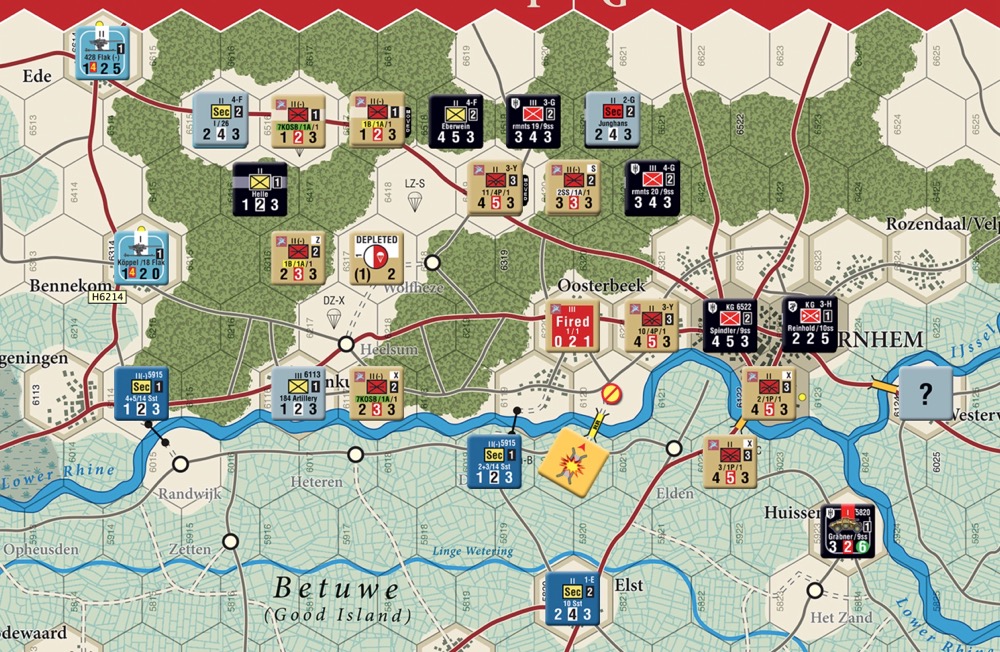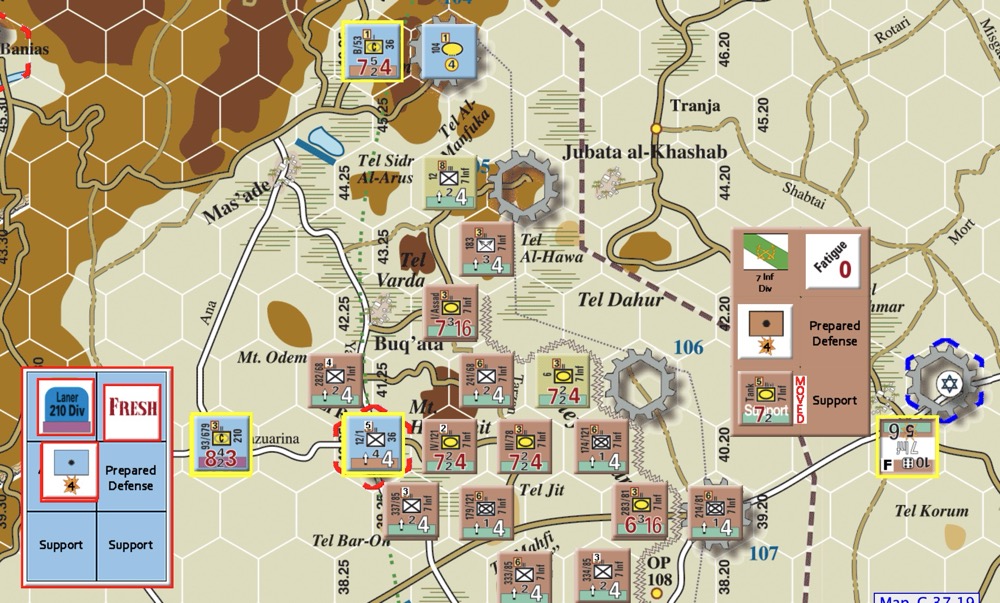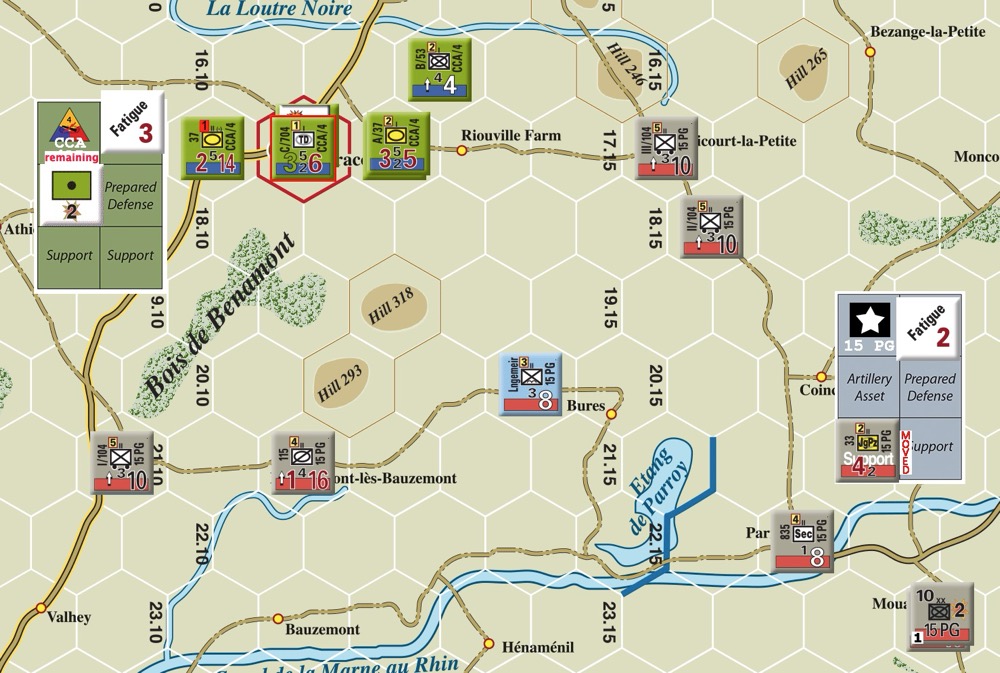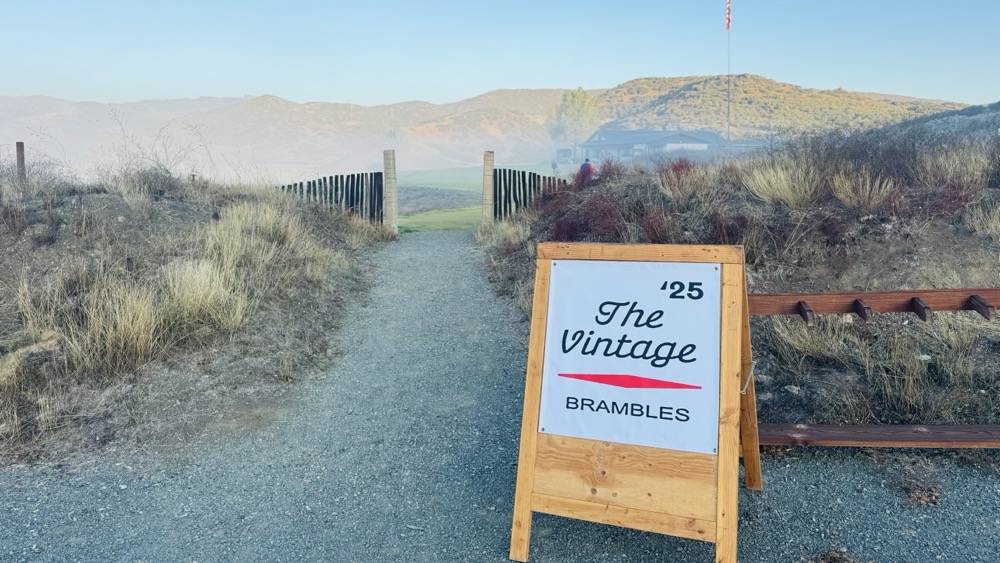Wargaming: Holland ‘44 and Battalion Combat Series
Being settled in Napa, and finally having a good workstation with a wide monitor, I’ve resumed regular online wargaming via Vassal with friends Allen and Doug.
 Holland ‘44 turn 5 near Arnhem
Holland ‘44 turn 5 near Arnhem
Doug and I are playing one of my all-time favorites: Holland ‘44. I played on a big map with fellow WARMAGES almost exactly two years ago. It is somewhat scripted in the openings: Allies do their airborne landings (British 1st, American 82nd and 101st) and try to secure key bridges and crossroads, while running XXX Corps up Hell’s Highway. Germans scramble to stop all this nonsense. I don’t mind this at all in a wargame as it makes it easy to get into, even for beginner gamers.
The game is part of a series of wargames by Mark Simonitch (often called the 4x series) that use a set of base rules and then layer on tweaks specific to the battle at hand. I use “series” loosely here as I think even the designer doesn’t refer to it as such. Maybe they are more of a family of games. The next games I’m going to talk about are a true series, having a core set of series rules that govern 90% or more of all the rules in the various instantiations in the various battle-specific games. I’ve got three 4x games in my want-to-play queue, sitting on my shelf: Stalingrad ‘42, Salerno ‘43, and Italy ‘43.
 Various BCS games in Vassal
Various BCS games in Vassal
Allen and I are playing the Battalion Combat Series (BCS), a true series from The Gamers and MMP. This is my third (and fourth as you’ll see) run at a game in this series and I’m committed to playing enough to get it. Allen’s in about the same boat. We’ve enlisted our experienced friend John to join our live sessions (Vassal and Discord) and coach us.
I think the big challenge with BCS is that the combat mechanisms are just so different from the wargaming norms. They aren’t complicated, but the bifurcation between assault capable units (generally infantry) and armor units and how they fight demands a lot of the player. In a good way! Dean Essig (and his successor Carl Fung) put a lot of thought into how to represent combined arms more realistically than other games at a similar scale (see Holland ‘44 above). Armor isn’t just infantry that can go a lot faster on roads.
Oh, and there’s a bunch of stuff in the game regarding command and control of formations that I won’t get into. This “bunch of stuff” is brilliant and lends itself to fun gameplay as well, as players generally alternate between activating different formations. Contrast this with Holland ‘44 where the Allied player does all their moves, resolves their battles, and then the German player does all their stuff.
 BCS Valley of Tears
BCS Valley of Tears
We agreed to play a Valley of Tears scenario for our first go. Valley of Tears was a surprising entry in the BCS family, covering the Yom Kippur war in 1973. A lot of arms and armor that aren’t too far removed from WWII, but certainly a different era. You know: jet fighters, wire guided anti-tank missiles, surface-to-air missiles, and so on. This means the game specific rules introduce a lot of changes from the series rules, such as a mini game conducted each turn to resolve air supremacy and allocate resources between the Sinai and Golan fronts.
So for two guys wanting to get into the BCS system and presumably use our learning of the series rules to play any game in the series, Valley of Tears probably wasn’t the best idea. Example: a key part of combined arms strategy and series rules in BCS is the use of divisional support armor as a resource for assaulting infantry. Imagine an infantry battalion (maybe 3-5 companies of ~100 soldiers each) trying to take a town, with a host of armor allocated by division HQ to support the attack. It might not be the entire tank battalion, as it is potentially divided across a few objectives the division is driving towards. This is support in BCS, and part of staging an effective regular attack is to use it. Also, part of staging a good attack is distracting the enemy’s support armor with your own armor ahead of time (called dropping support) to help out your assaulting unit.
In Valley of Tears, the Israelis don’t use support. Ever. This is part of the design, and accounts for the armor-forward doctrine of the IDF at the time. So for the Israeli player, a big chunk of the rules related to combined arms just gets pushed to the side.
Allen and I made enough mistakes during our first two turns of the short Golan scenario we were playing that we decided to abort and pivot to a different BCS game.
 BCS Arracourt
BCS Arracourt
That game would be the Arracourt with the full campaign. Arracourt is designed to be a more approachable BCS game, and was in fact the first one where I pushed around cardboard learning the system. It has almost no game-specific rules, and the entire campaign is played on a single 22” x 34” map. We are just now starting turn 3 (of 13) and having a blast. Still learning how to make things work (and manage formation fatigue!) but this has been a much better experience for us than Valley of Tears.








